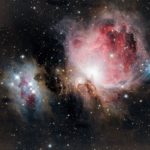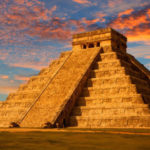Interesting facts about constellations
 The study of constellations is interesting not only for children, but also for adults. The imagination of people long ago united the twinkling points of stars in the night sky into whole pictures and composed beautiful legends for them, and among many peoples they coincide. Modern astronomy does not study constellations separately, but many people believe that they have sacred significance and influence our lives.
The study of constellations is interesting not only for children, but also for adults. The imagination of people long ago united the twinkling points of stars in the night sky into whole pictures and composed beautiful legends for them, and among many peoples they coincide. Modern astronomy does not study constellations separately, but many people believe that they have sacred significance and influence our lives.
In modern astronomy stands 88 constellations. Some of them can be seen only from the Northern Hemisphere, and some – from the Southern.
Stars that are visually in one constellation may actually be located hundreds or thousands of light years from each other, some farther, others closer. But from Earth it seems that they are close.
48 of the 88 constellations mentioned above were described by Ptolemy, an ancient Greek scientist and philosopher who compiled his atlas of the starry sky about 2,200 years ago.
The constellation of Pisces includes the largest spiral galaxy among those observed flat.
Some constellations, in particular, Ursa Major, are mentioned in Homer’s poems created by him in the 8th century BC.
Stars and galaxies are not fixed at all, therefore, the constellations also gradually change and distort. But within the limits of the lives of several generations, this is unnoticed.
The star Mezartim in the constellation Aries has become one of the first double stars discovered with a telescope.
The constellation of Orion was especially distinguished among a great many peoples. Thus, the ancient Egyptians revered him as the embodiment of the supreme god Osiris.
The structure of the Taurus constellation includes the famous Crab Nebula, which is the remnants of an exploded supernova, as well as two whole star clusters – Giyada and Pleiades.
Depending on the time of year, we can observe different constellations in the sky, since the Earth moves around the Sun and does not stand still.
In the night sky, the constellations shift by about 1 degree per day.
In total, 12 constellations of the zodiac stand out, and they are all visible during the annual rotation of our planet around the sun.
From the end of November to mid-December, our luminary is in the constellation Ophiuchus, but astrologers usually do not rank it as a zodiac.
Some constellations enter into others. Thus, 19 constellations are part of Hercules, and 10 are part of Ursa Major.
The biggest constellation in the night sky is Hydra. It occupies about 3% of the visible space above your head. And the smallest is the famous Southern Cross occupying 0.165%.
In the constellation of Aquarius is the coldest of the stars known to us, its surface temperature is only about 2700 degrees. It is separated by 900 light-years from the Sun.
The Australian and New Zealand flags depict the Southern Cross, the brightest constellation of the Southern Hemisphere.
The constellation of Cancer includes only dim stars, which makes it the most inconspicuous of all the signs of the zodiac( also you can check this interesting article – Cancer zodiac sign).
The star Regulus in the constellation Leo radiates 160 times more light into space than our Sun.
The Gemini constellation is interesting because it was thanks to its stars that the astronomer Herschel in the 18th century was able to discover the planet Uranus with a telescope(also, you can check out this post – May 23 Zodiac).
The Bucket constellation includes not only stars. Two bright points in its composition are whole galaxies, but they are so far away from us that they can really be confused with stars.
Zodiacal constellations were singled out in a special group by ancient Greek astronomers.
The autumnal equinox is located in the constellation Virgo.
The Libra constellation was previously part of Scorpio, but later some stars were isolated from it by astronomers.
The sun passes the constellation Scorpius faster than all the others – in just a week.
The center of our galaxy is in the constellation Sagittarius.
The ancient Greeks called the Capricorn constellation “goat fish”.
The constellation of Aquarius includes a globular cluster consisting of approximately 150 thousand stars.



























